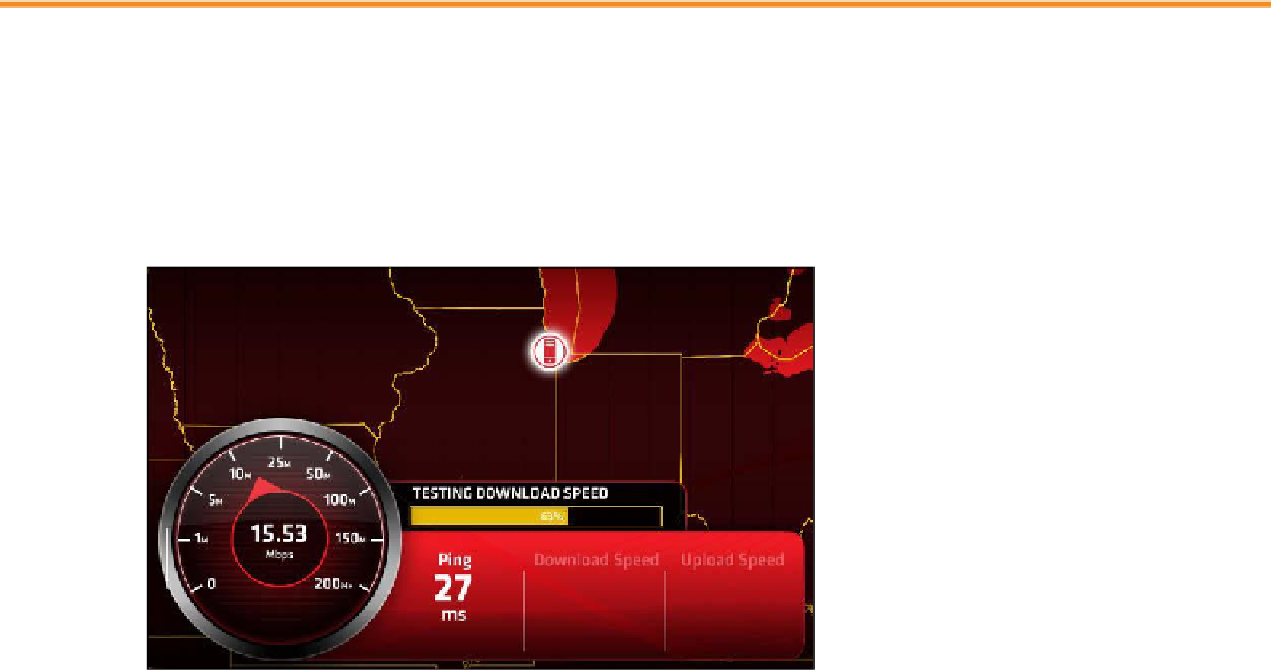Information Technology Reference
In-Depth Information
for different speeds of Internet connection, and they throttle the connec-
tion speed (usually at the broadband modem) for customers who have
signed up for a slower connection.
The Internet service that you subscribe to has two speeds, both mea-
sured in megabytes per second (Mbps). The first is its theoretical maxi-
mum speed, which is what your ISP tells you that it is delivering under
optimal conditions. The second is your actual speed, which will be lower.
Testing Your Internet Connection Speed
How fast is your connection? To find out, use an online speed test. Open your web browser and go to a site that
offers free testing. You can search for a free testing site, or try one of these:
◾
http://speedtest.comcast.net
◾
www.cnet.com/internet-speed-test
◾
www.dslreports.com/speedtest?flash=1
Types of.Internet Connections
When choosing Internet service for your home or business, there are
a variety of factors to consider. Speed is important, of course—faster is
better. However, faster may also be more expensive. It's also important
to look at availability, and evaluate any package deals you may be able to
get with other services such as cable TV or phone service.
In the following sections, you'll learn about the major types of Internet
connections available to consumers today. All of these types except dial-
up are always-on
broadband
connections. The word broadband literally
means
wide path,
but when referring to Internet connectivity it refers to
a connection with a speed higher than 256 Kbps. Many of today's broad-
band Internet options are much faster than that.
broadband
A fast, always-on network connection.



